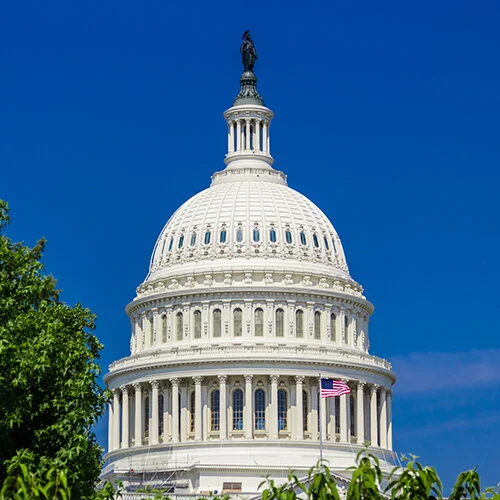The Internal Revenue Service (IRS) has issued a proposed regulation, providing guidance for employers that are required to include an automatic enrollment provision with their 401(k) or 403(b) plan in order to comply with the SECURE 2.0 Act of 2022 (SECURE 2.0).
Read MoreThe Internal Revenue Service (IRS) recently issued Notice 2024-77, providing interim guidance on the treatment of “inadvertent benefit overpayments” from defined benefit and defined contribution plans as provided by Section 301 of the SECURE 2.0 Act of 2022 (SECURE 2.0).
Read MoreThe Internal Revenue Service (IRS) recently issued Notice 2024-73, providing guidance regarding the participation of long-term, part-time (LTPT) employees in 403(b) plans subject to Title I of the Employee Retirement Income Security Act (ERISA).
Read MoreRecent legislation passed by Congress includes several provisions that enhance the ability of workers to increase their retirement savings. One of these provisions, Section 110 of the SECURE 2.0 Act of 2022 (SECURE 2.0), also enhances the ability of employers that sponsor a 401(k), 403(b), governmental 457(b), or a SIMPLE IRA plan to supplement workers’ retirement savings by providing matching contributions to employees who make qualified student loan payments (QSLPs) in 2024 and later plan years.
Read MoreThe Department of Labor (DOL) has issued an interim final rule, expanding the Abandoned Plan Program regulations to also include plans of employers who are in liquidation under Chapter 7 of the U.S. Bankruptcy Code.
Read MoreThe Department of Labor (DOL) has released proposed regulations related to the implementation of section 120 of the SECURE 2.0 Act (SECURE 2.0).
Read MoreThe Department of Labor (DOL) issued a final rule to assist employers when determining whether a worker is considered an employee or an independent contractor under the Fair Labor Standards Act (FLSA).
Read MoreThe Internal Revenue Service (IRS) has released Notice 2024-02, which provides guidance in a question and answer format regarding several provisions of the SECURE 2.0 Act of 2022 (SECURE 2.0). This article summarizes the guidance contained in Notice 2024-02.
Read MoreThe Internal Revenue Service (IRS) has released a proposed regulation reflecting statutory changes related to long-term, part-time (LTPT) employees made by the SECURE Act of 2019 (SECURE Act) and the SECURE 2.0 Act of 2022 (SECURE 2.0).
Read MoreThe Department of Labor (DOL) recently released a regulatory package that includes a proposed amendment to the regulations that define what constitutes an investment advice fiduciary under the Employee Retirement Income Security Act of 1974 (ERISA) and the Internal Revenue Code (the “Retirement Security Rule”).
Read MoreThe SECURE Act of 2019 has been followed by a package of several bills, which have collectively been dubbed “SECURE 2.0.” These bills were eventually combined into a single bill, titled The SECURE 2.0 Act of 2022. This bill was included in the Consolidated Appropriations Act of 2023, which was signed into law on December 29, 2022.
Read MoreThe Davis-Bacon Act (DBA) has played a major role in the construction industry for over 90 years. Passed in 1931, it has been described by the Supreme Court as a “minimum wage law designed for the benefit of construction workers.” The DOL has issued proposed regulations that represent the most comprehensive changes to the DBA since 1982.
Read MoreEmployers of all types have expressed interest in learning more about multiple employer plans (MEPs). But the unified plan rule, sometimes known as the “one bad apple rule,” has discouraged some employers from pursuing MEP participation. This rule treats a qualification failure by one participating employer as a MEP disqualification event for all employers maintaining the plan. To help expand access to MEPs, the IRS has released proposed regulations, which provide a welcome exception to the unified plan rule. The proposed regulations also withdraw prior proposed regulations that were originally issued in July 2019.
Read MoreWe have guidance regarding certain changes brought about by the SECURE Act. On February 23, 2022, the IRS released proposed regulations that revise the existing required minimum distribution (RMD) regulations and other related regulations.
Read MoreA new IRS withholding form released in 2022 means that payers and individuals will have a new process for calculating and electing federal income tax withholding on retirement distributions. Although the IRS will not require payers to use the new and revised forms until January 1, 2023, payers may start using them in 2022.
Read MoreLast month the U.S. House of Representatives passed H.R. 5376, the Build Back Better Act (“BBB Act” or “the Act”). Following quickly on the heels of the Infrastructure Investment and Jobs Act, the BBB Act contains several retirement and benefits provisions that may affect financial organizations, service providers, and consumers. This bill has gone through numerous revisions as it made its journey to the House floor for a vote. It will now go to the Senate, which will likely make further revisions.
Read MoreIRS Revenue Procedure 2021-30 contains significant updates to the Employee Plans Compliance Resolution System used by employers to correct certain retirement plan qualification failures so that they can continue to maintain a tax-favored retirement plan. Learn more about the changes.
Read MoreThe latest COVID-19 relief legislation comes in the form of the American Rescue Plan Act of 2021, signed into law on March 11. It contains a third round of direct payments to Americans, funding to help hard-hit industries, and many other provisions, including some that will affect health plans and defined benefit plans.
Read More









